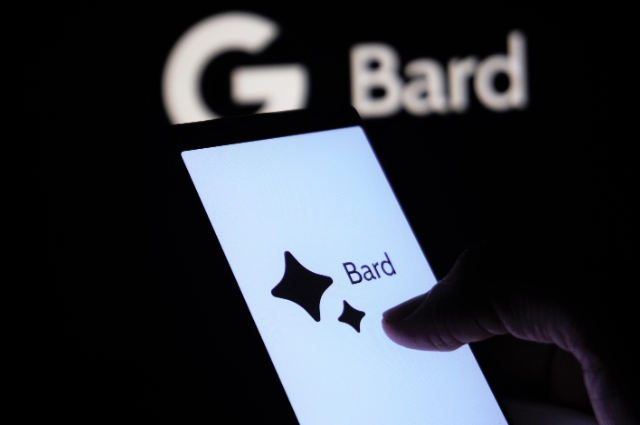
Photo by Mojahid Mottakin on Unsplash
Abstract: A Chatbot is a program which responds intelligently like a human. The program is implemented using Java programming language applets are used. Applets are used because it is easy to create the dialog box required for the conversation between the user and the bot.
Advanced versions of chatbots rely on NLP and ML. These chatbots can be really helpful in the Indian educational system at the times of disaster or calamity like pandemics/floods etc. In Western educational system, the use of chatbots is common but the technology is not used more effectively in India. The technology can be misused if given in the wrong hands.
Introduction
1. What is a chatbot?
A computer program that simulates and processes human conversation(either written or spoken) is known as a chatbot. It allows humans to interact with digital devices as if they were communicating with a real person. Chatbots can be simple as well as rudimentary programs. A single-line response for a simple query or increased levels of personalization as more information is gathered and processed. For example, you might have used voice commands to order a cup of tea or you're researching a product on a website and suddenly a window pops up on your screen asking if you need help. Chatbots are driven by Artificial intelligence, automated rules, natural language processing (NLP), and machine learning (ML). There are two main types of chatbots:
- Declarative chatbots: They are single-purpose programs that focus on performing one function. The most commonly used chatbots are Declarative chatbots.
- Conversational chatbots: They are much more sophisticated, interactive, and personalized than declarative chatbots. They apply predictive intelligence and analytics to enable personalization based on user profiles and past user behaviour. For example, apple's Siri and Amazon's Alexa. They are known as virtual assistants or digital assistants.
A personal alternative to a written FAQ or guide is a chatbot. The origin of a chatbot can be traced back in the 1950s with Alan Turing's vision of intelligent machines. The original chatbot was the phone tree which was an automated customer service model.
The chatbot functions smoothly when AI is incorporated into it. If it is of high quality, the chatbot performs smoothly. If data is of low quality, the chatbot performs poorly. Future prospects of chatbots are bright as development in the field of AI and 5G technology will enhance chatbots's performance.
2. What is an advanced version of the chatbot?
These chatbots mimic human-like interactions by comprehending user questions and offering appropriate real-time replies. Natural language processing (NLP) and machine learning (ML) techniques are used by these chatbots to enhance their performance. Examples of chatbots are the new Bing, ChatGPT, Jasper, Youchat, Chatsonic by writesonic, socratic by Google, and Bard.
The new Bing is the best AI chatbot overall. It helps to access current events linking back to the sources it retrieved it's answer from. The advantages of the new Bing are access to the internet, links back to sources, use of OpenAI's, and most advanced LLM. The disadvantages of the new Bing are open review and query cap.
ChatGPT is the best original AI chatbot. It uses OpenAI's GPT 3.5 or GPT-4.
It can generate text, solve math problems, and code. It offers conversation capabilities and it's free of cost. The advantages of ChatGPT are writing skills, STEM knowledge, and conversational. The disadvantages of ChatGPT are not always explainable and not connected to the internet.
Jasper is the best AI chatbot for businesses and marketers. It summarises texts and generates paragraphs and product descriptions. It checks for plagiarism and grammar. The advantages of Jasper are 50 different writing templates, copy editing features, and plagiarism checker. The disadvantages of Jasper are the focus on written text and the steep cost.
Youchat is the best AI chatbot for a ChatGPT alternative. It lists sources for the text it generates. The advantages of Youchat are readily available, free, and source citing. The disadvantage of Youchat UI lack of aesthetic appeal in the data stage.
Chatsonic by writesonic is the best AI chatbot for news/ content creators. It is aware of current events, with an extensive feature suite, including voice dictation and image generation. The advantages of Chatsonic are up-to-date, a variety of use cases, free trial. The disadvantages of Chatsonic are subscription cost, and can't do the math.
Socratic by Google is the best AI chatbot for kids and students. Type in any question to generate a response. It includes fun graphics and supports scanning worksheets to get a specially curated answer. The advantages of Socratic is free, educational, and easy to use. The disadvantages of Socratic are it doesn't write text, no desktop version.
Google Bard is the best AI chatbot for writing assistants. It is powered by PaLM2 and Google's features. It generates clear text quickly.
The advantages of Google Bard are free, access to Google, and good text editing skills. The disadvantages of Google Bard are no sources and, can't help much with the code.
3. Role of advanced versions of chatbots in the Indian educational system.
Chatbots can automate tasks like answering common questions, freeing up teacher's time to focus on providing quality education to their students. Through rapid conversations, a chatbot can guide, advise, and remedy questions and concerns on any topic.
4. Merits and demerits of advanced versions of chatbots in the Indian educational system.
- Merits; 24/7 access to support and guidance, personalized recommendations based on learning history, quick and accurate answers to questions, improved study skills and time management, increased motivation and engagement with learning, and access to a wide range of resources.
- Demerits; lack of academic integrity, providing inaccurate information sometimes, biased responses, limited knowledge, inability to multitask and understand context, lack of emotional intelligence.
Conclusion
"Artificial intelligence can be useful but dangerous too".
. . .
References.
- www.oracle.com
- www.zdnet.com
